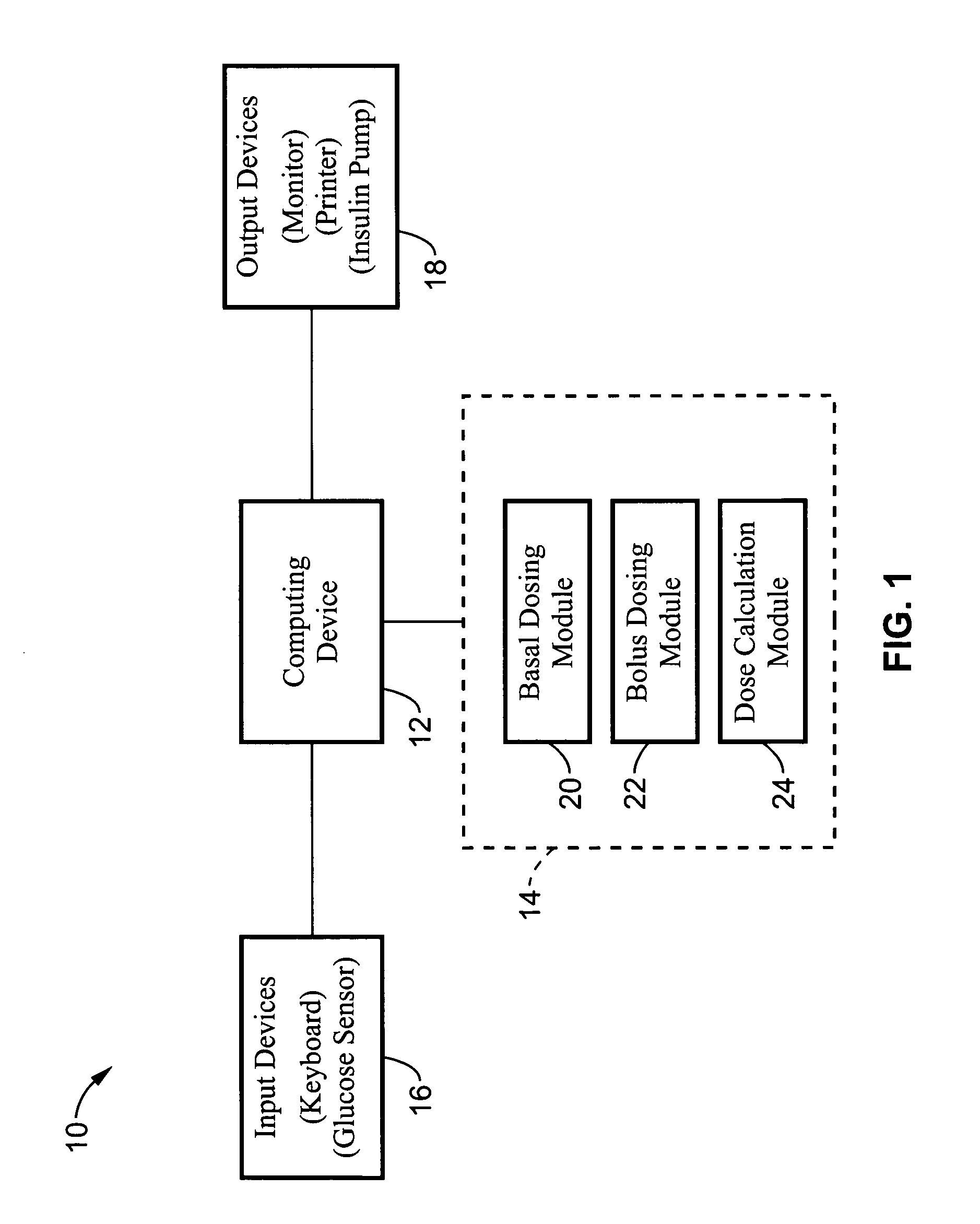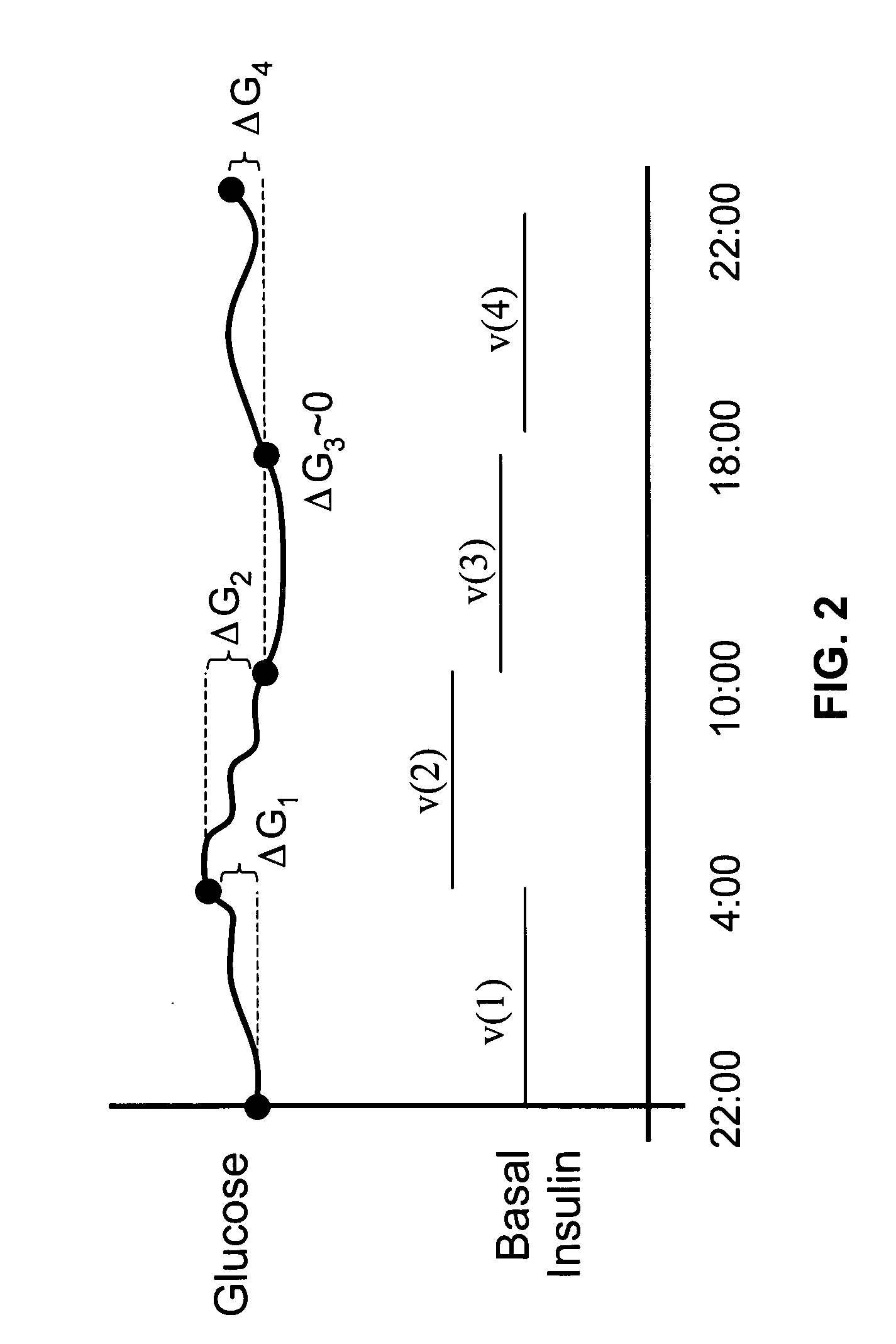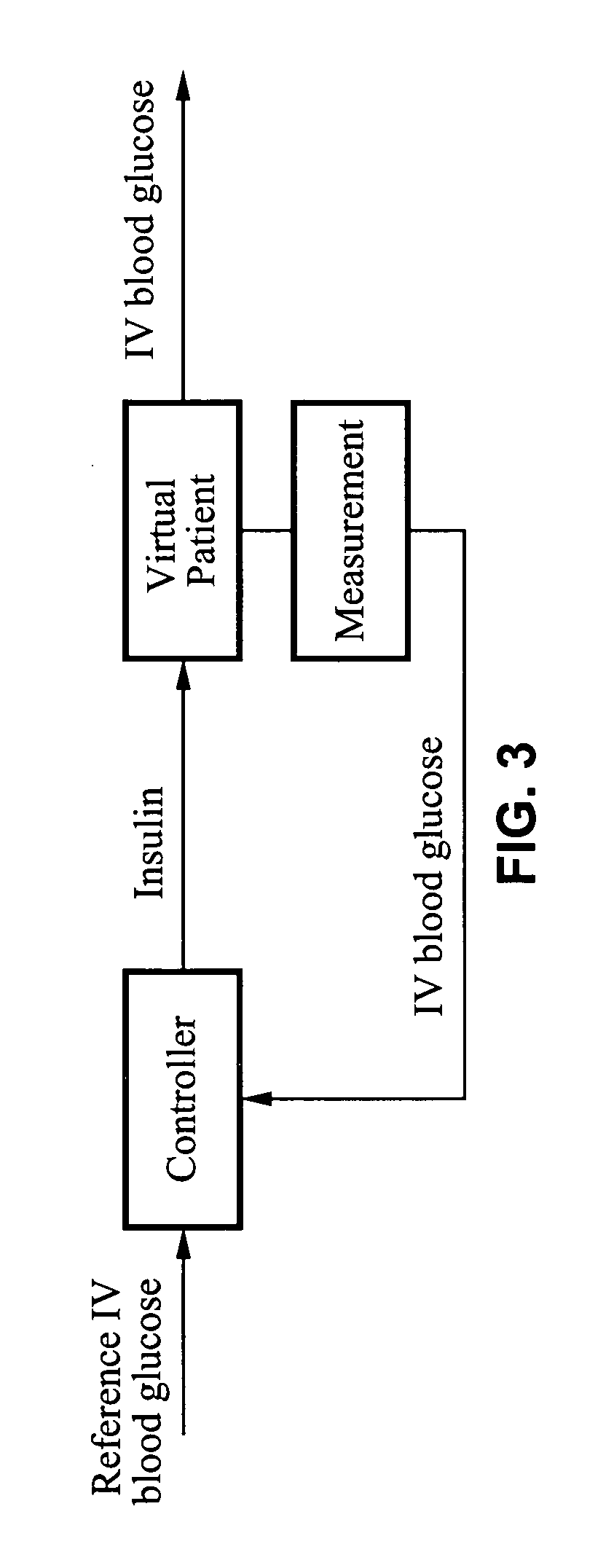Method and apparatus for glucose control and insulin dosing for diabetics
a technology for diabetics and glucose, applied in the field of glucose control and insulin dosing for diabetics, can solve the problems of inconvenient, painful method of insulin delivery, diabetes, brain damage, etc., and achieve the effect of ensuring robustness to intra-peritoneal administration
- Summary
- Abstract
- Description
- Claims
- Application Information
AI Technical Summary
Benefits of technology
Problems solved by technology
Method used
Image
Examples
example 1
[0173]To accurately simulate the meal-to-meal control of blood glucose concentration through insulin therapy of patients with Type 1 diabetes, a run-to-run algorithm is used on a virtual diabetic patient model to control blood glucose concentrations. The algorithm of the present invention can be adapted for evaluation with any number of virtual patient models for diabetes that presently exist. The following example emphasizes results evaluated in the Bergman model. However, the algorithm was also used with the Sorensen and Automated Insulin Dosage Advisor (AIDA) design virtual patient systems for comparison and to confirm the results.
[0174]The Bergman model is a three compartment minimal model of glucose and insulin dynamics. This 3rd-order model is comprised of a glucose compartment, (G), a remote insulin compartment, (X), and an insulin compartment, (I). The remote insulin compartment mediates glucose uptake within the glucose space to the peripheral and hepatic tissues. The insul...
example 2
[0195]In order to show the feasibility of the use of a run-to-run algorithm to improve postprandial glucose concentrations in individuals with Type 1 diabetes mellitus (T1DM), fourteen subjects were recruited for a 10-week study. During the initial phases of the study, information was derived for each subject with regard to basal insulin infusion rates, insulin-to-carbohydrate ratios, insulin correction factors for hyperglycemia, and insulin sensitivities. During the final phases of the study, the algorithm was used to suggest preprandial insulin doses, with the goal of bringing the postprandial glucose into a predetermined target range within 3-7 days.
[0196]Selected participants had a body mass index in the range of 20-30 kg / m2, A1C less than or equal to 8% and ranged in age between 18-75 years. The participants also required 0.5-1.0 units of rapid-acting insulin / kg / day; had serum creatinine levels that were less than or equal to 1.5 mg / dL; exhibited normal laboratory values includ...
example 3
[0226]Another non-limiting example of a run-to-run algorithm correlates the post meal blood glucose (BG) values to a pre-meal carbohydrate intake level. The post meal BG values are sampled at two fiducial lag times relative to the start of the meal at 60 minute and 90 minute time points. To realize a high correlation between a given pre-meal event and the post meal events, the pre-meal event needs specification in two areas: timing and blood glucose level. In this embodiment, the pre-meal carbohydrate intake event is preferably sufficiently isolated in time. It is preferred that in advance of the pre-meal carbohydrate-intake event, no fast-acting insulin bolus must have occurred for an interval of at least 2 hours. If this condition is satisfied, then a “candidate” pre-meal event is identified.
[0227]Following a candidate pre-meal carbohydrate intake event, additional carbohydrate-intake events cannot occur more than 20 minutes after the candidate pre-meal carbohydrate intake event. ...
PUM
| Property | Measurement | Unit |
|---|---|---|
| concentration | aaaaa | aaaaa |
| concentration | aaaaa | aaaaa |
| concentration | aaaaa | aaaaa |
Abstract
Description
Claims
Application Information
 Login to View More
Login to View More - R&D
- Intellectual Property
- Life Sciences
- Materials
- Tech Scout
- Unparalleled Data Quality
- Higher Quality Content
- 60% Fewer Hallucinations
Browse by: Latest US Patents, China's latest patents, Technical Efficacy Thesaurus, Application Domain, Technology Topic, Popular Technical Reports.
© 2025 PatSnap. All rights reserved.Legal|Privacy policy|Modern Slavery Act Transparency Statement|Sitemap|About US| Contact US: help@patsnap.com



